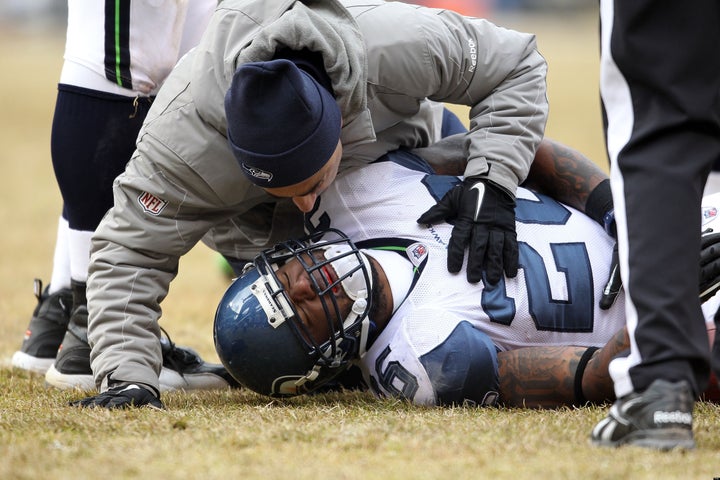
For years, the NFL has denied the link between football injuries, namely concussions, and brain injury. Only in the past few years has it begun to understand the impact the sport has on the health of its players.
This year, the NFL has been on what many have called a crusade against concussions. From the ban on head hits to the recent launch of a new website, www.nflhealthandsafety.com, the organization is doing its part to keep players safe, during their time on the field and long after.
The website is aimed at not only spreading awareness about the dangers associated with these injuries but documents the efforts of the league to fund research that will hopefully help give us better comprehension of the long-term impacts of these injuries.
Despite some fans and players initially resistant to the changes imposed by the commissioner this season, members of the medical community, myself included, saw it as a victory for athletes of all ages, at all levels.
Imposing stricter rules regarding return-to-play following a head injury has indirectly helped protect countless kids from similar injuries and even more complicated side effects. Schools and youth sports groups have taken a page from the NFL playbook and have begun enforcing new rules stating players must be evaluated by a medical professional before returning to the field.
The enforcement of these new rules has helped bring the severity of concussions to light for many coaches, players and parents. Parents now know that they must play a proactive role in protecting their children, both on and off the field. And athletes know that playing through the pain is simply not an option anymore -- this alone has probably saved thousands of kids from possible concussion mismanagement.
In addition to changing how the game of football is played, or rather enforcing the rules that were there all along, the NFL has been doing extensive research to better understand concussions and their connection to brain damage.
A main focus of the NFL's research this season has involved impact testing; specifically how they can effectively measure the impact a hit has on a player's brain at the time of the injury. This information is crucial in making proper evaluations regarding the players' health during game play.
No player wants to be removed from the game -- especially if it isn't necessary. If successful, this new data will provide immediate, irrefutable evidence justifying their removal.
Back in October, the league began looking into updating uniforms, particularly helmets, so that they were embedded with impact-sensors, which would be part of a head impact telemetry study, the first of its kind backed by the NFL.
Similar programs are currently used by nine college football teams. In these studies, the sensors are placed in the helmet's padding, and are activated when a player is hit with dangerously high force. Upon activation of the sensor, the data is sent to the trainers and coaches on the sideline who are then able to immediately evaluate the injury.
It was announced recently the league plans to put the test system in place as early as next season. It has yet to announce details of the new equipment, but according to The Washington Post, accelerometers will be installed in mouthpieces, earpieces, and helmets, to see if they provide the necessary data to make a proper neuroanalysis during games.
If successful, NFL players will no longer have an opportunity to further injure themselves by returning to the game prematurely after a traumatic blow. Further, the collected data from all the injured payers over the course of the season will be studied in hopes of gaining a broader understanding on the impact of these hits.
Upon learning more about how the brain reacts to trauma in different areas, helmets can be tailored to better protect players -- at all levels. Some helmet manufacturers are already building new prototypes, aimed at better protecting the brain.
The NFL's openness this season about the very real dangers of concussions, head injuries and the game of football has served as a much-needed wake-up call for many involved with the sport.
NFL Commissioner Roger Goodell reaffirms his concerns for the health and safety of his players and all players with a statement on its new website: "The NFL not only has a long standing commitment to the health and well-being of its players, but to players active in collegiate, high school and youth programs. We recognize that the NFL is looked to as a leader and that this position offers an opportunity and responsibility that we not only accept but embrace."
While we are a long way from a full understanding of these injuries, the NFL has helped bring awareness and knowledge to the public arena, which is a necessary tool in prevention and recovery from these dangerous and potentially life threatening injuries.
ABOUT THE AUTHOR:
Dr. Sharon Chirban is an instructor at Harvard Medical School, registered with the U.S. Olympic Committee and on staff at Children's Hospital Boston, where she works in the concussion clinic in the division of sports medicine. Her website is www.amplifyingperformance.com.
